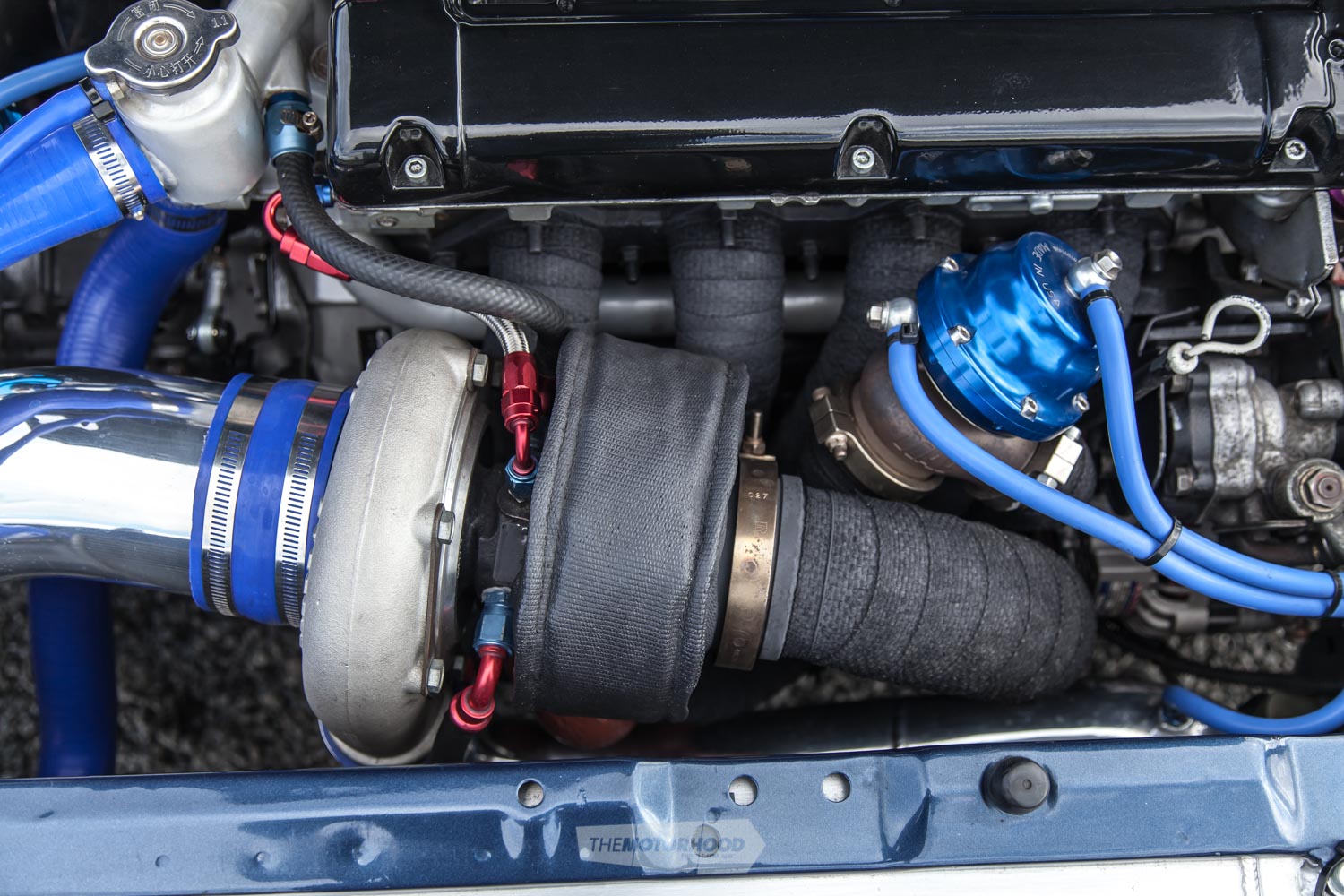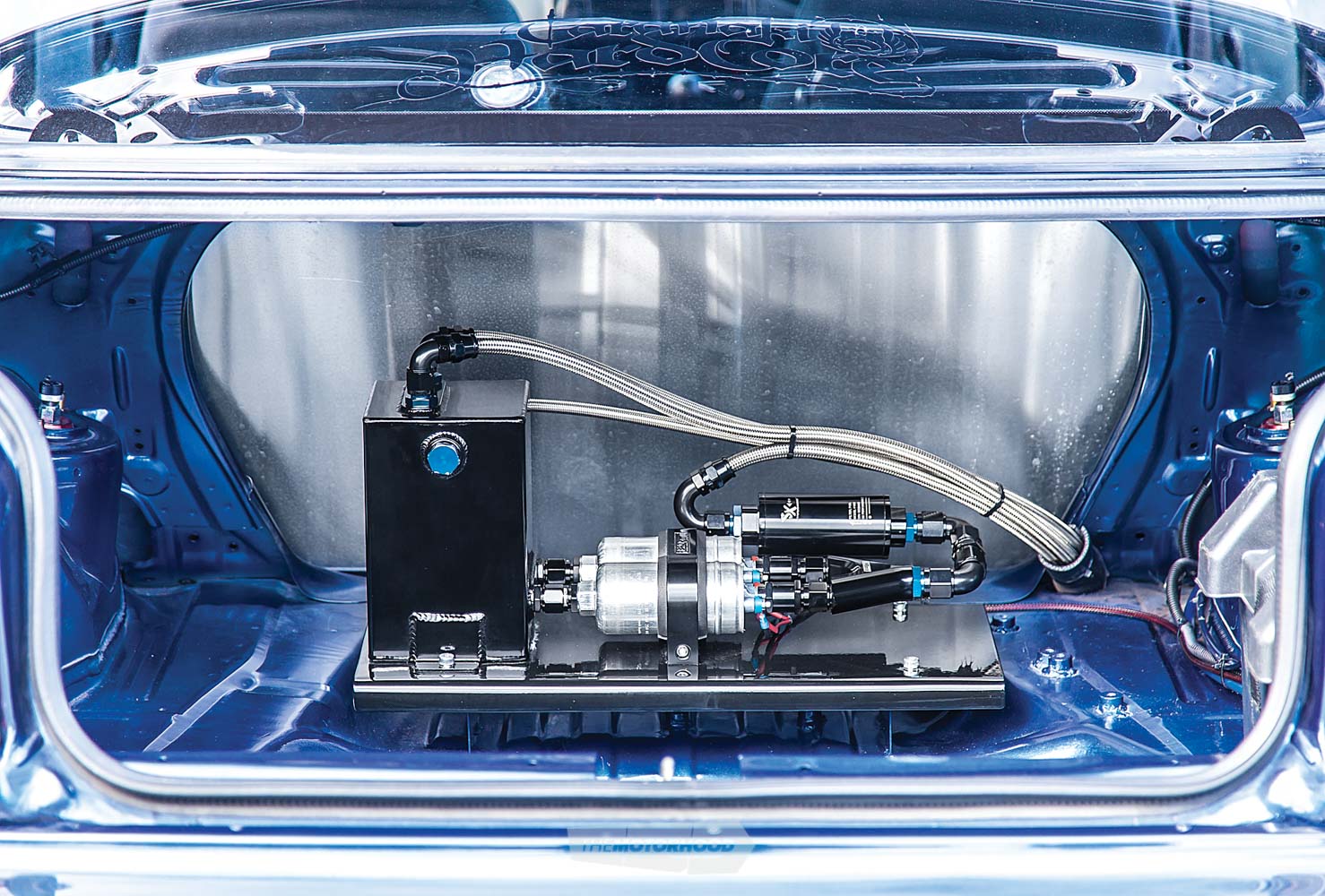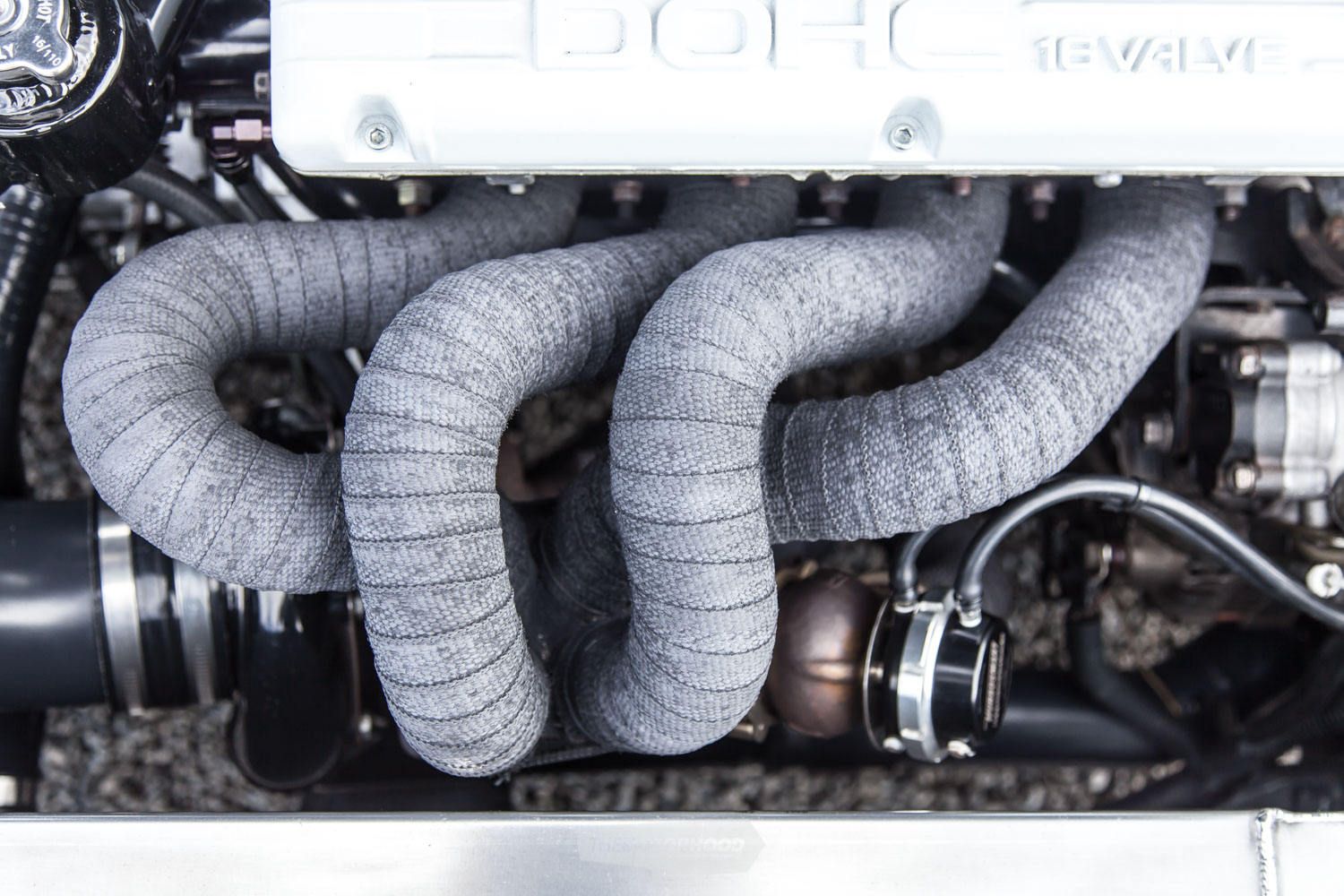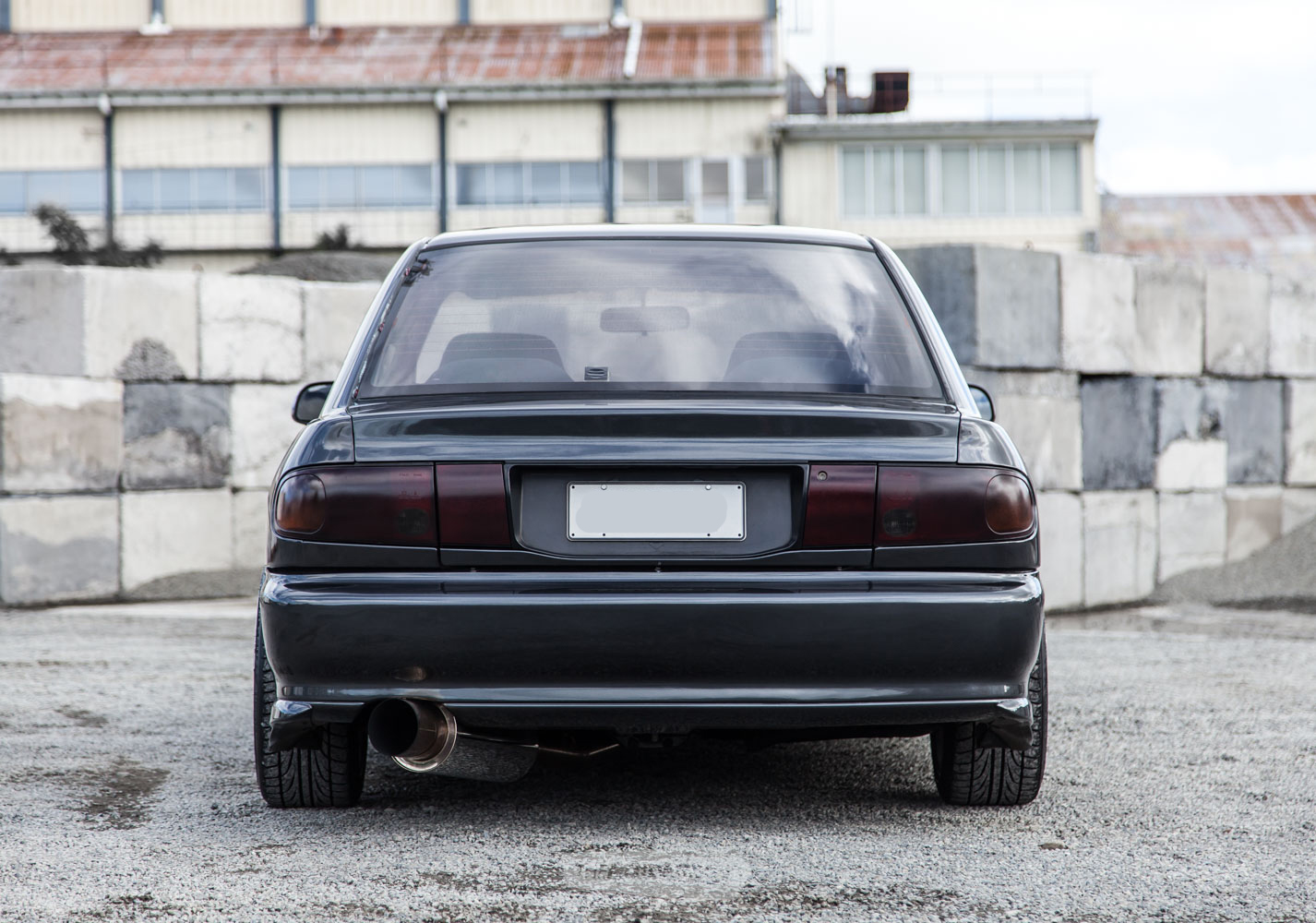The Briggs twins are keeping high-powered Evolutions alive, despite breaking more than their fair share of parts as they battle each other to be first into the nine-second club
You don’t forget your roots — especially your first car — and no chassis is more rooted in the history of many New Zealanders than that of the iconic Mitsubishi Evolution. Loved for their killer looks, incredibly adaptable powerhouses, and near-perfect four-wheel-drive systems, Evos reigned supreme for a good decade before becoming one of the harder-to-find gems today.
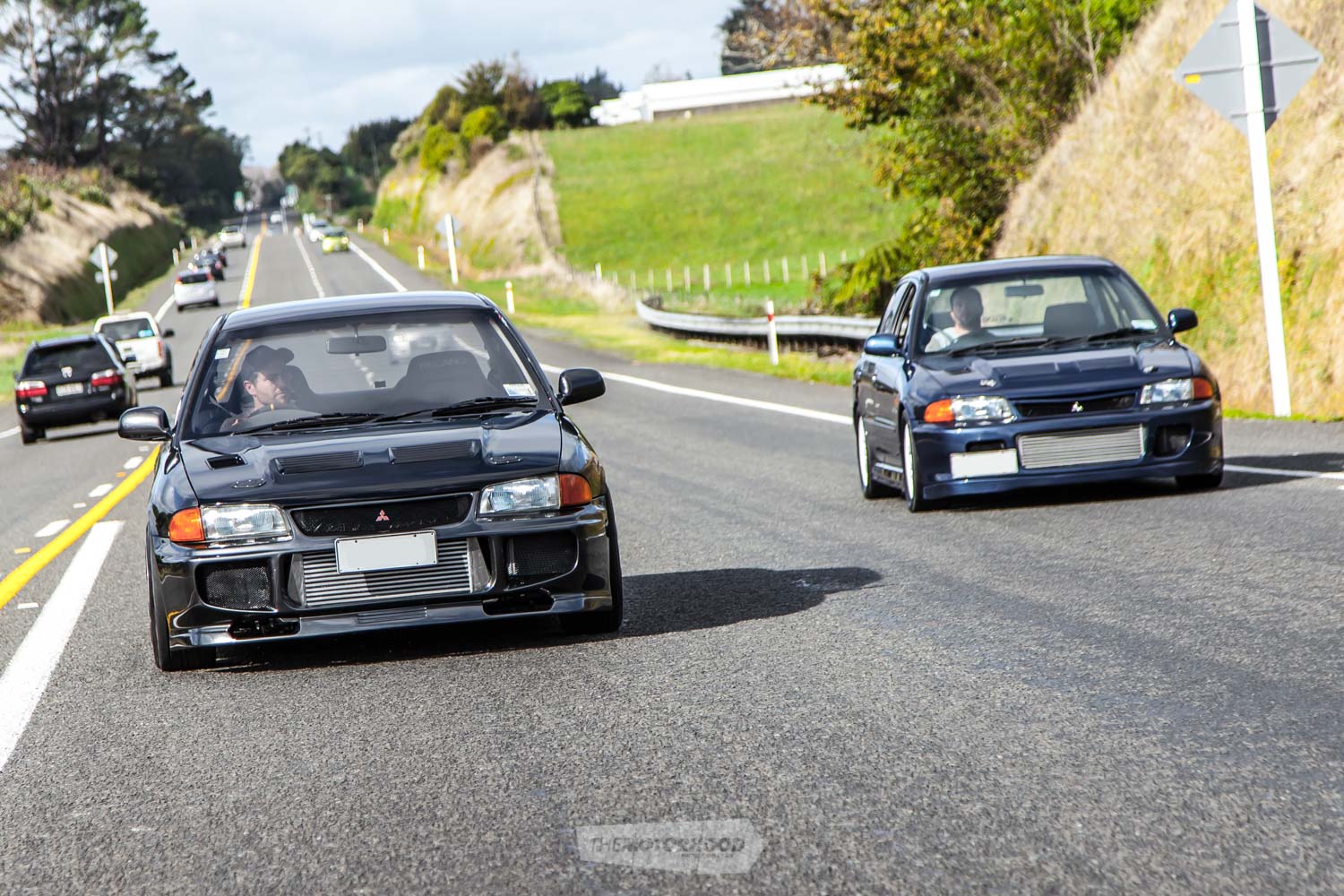
The Briggs twins have spent years developing two of the best-known codes in the Evo family, living under the same roof while their cars sit side by side in the garage. Regan is the man responsible for the ’93 GSR, and Thomas is the wheelman behind the ’94 Evo II. Both cars have already slayed multiple 10-second passes — to the dismay of track officials due to their uncaged shells — and only continue to peel seconds back as they head towards their first nine-second quarters.
1993 Mitsubishi Lancer GSR
“At the time [when looking for a car], most of my mates had Skylines and Silvias, Thomas already owned a GSR, and I was getting impatient trying to find something half decent,” Regan said. “That’s when this GSR popped up on Trade Me.” After making the trip up to Morrinsville, the brothers found a near-stock example of the 4G93-packing chassis, with the addition of an Evo bonnet and front bumper, and the whole lot sitting sky high on a set of “f**king ugly 17-inch wheels”. Regan slapped on the usual itinerary of upgrades, including an Evo TD05 turbo, wastegate, and blow-off valve.

The 4G93 met its maker after a trip up to Meremere Dragway during a particularly gnarly run that saw the bottom end say goodbye, pork pie. While he was tossing up whether to go down the road of building up another 1.8-litre heart, a well-priced, complete Evo — lacking WOF, rego, and dignity — popped up near Rotorua. Regan knew that he had to jump on it to secure the sought-after 4G63T. Within a day, the engine had been ripped from its donor body and planted firmly inside the GSR’s engine bay.
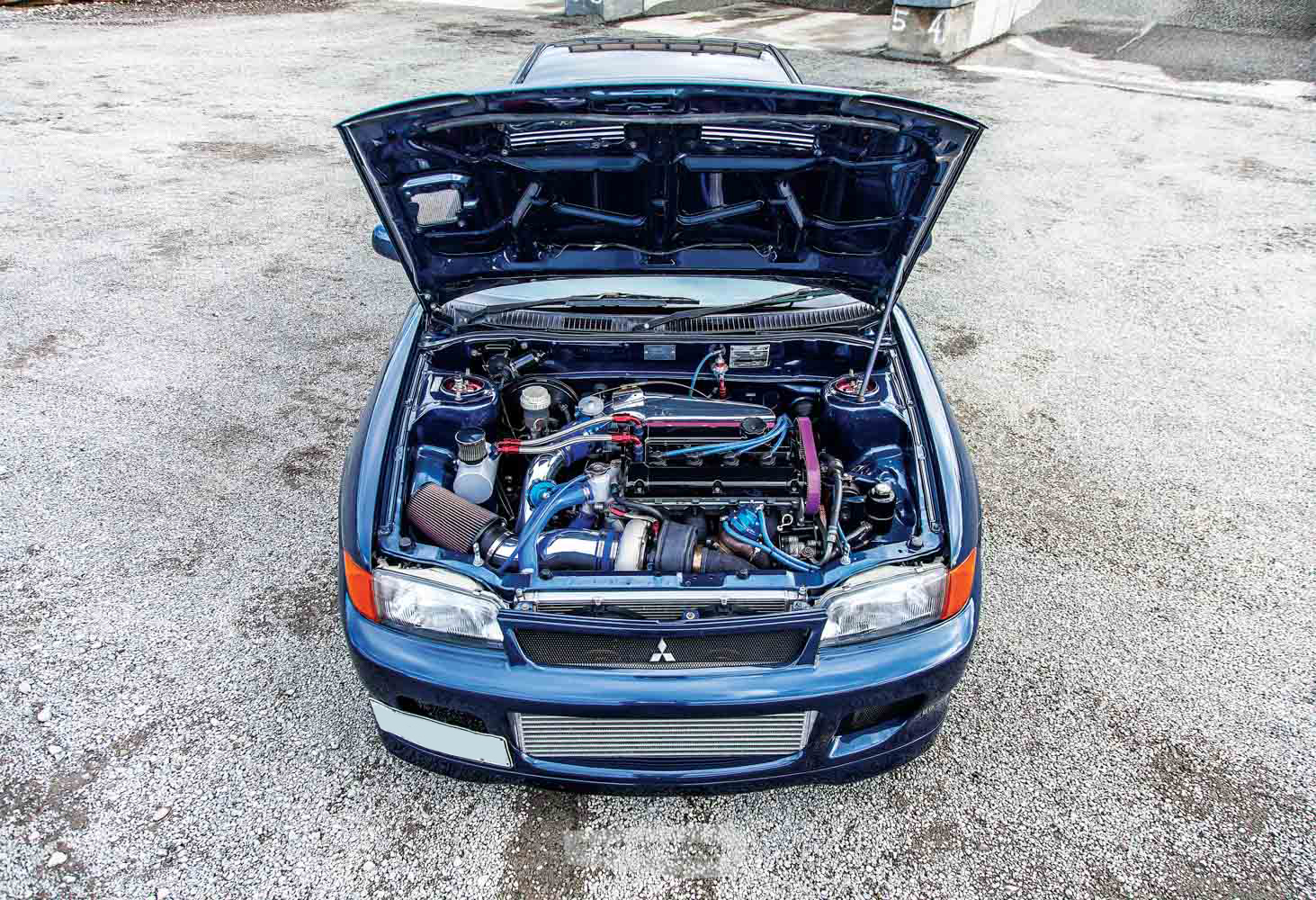
Sadly, that didn’t last long either. It only ran for a matter of days before the cam belt slipped a few teeth and threw the timing right out, once again destroying the bottom end. Regan decided it was time to get serious. “I wanted a street car capable of making 300kW and running a 10-second quarter-mile,” Regan told us, “so the car was pulled off the road, and we went all out.” The first job on the long, long list of upgrades was picking out the right turbo. Putting in a bit of his own research, Regan ordered a Garrett GT3582R for its proven ability to function effectively under pressure and provide a good balance between responsiveness and top-end power capability. He then quickly spiralled into the realms of professional engine builders, after a quick phone call to Speedtech Motorsport (STM) meant that the empty shell became home to an STM short block that was then mated to a factory head with a pair of Kelford 272-degree camshafts. Being a fitter by trade, Regan decided that the fabrication work and component mounting could be done at home, including the top-mount manifold to hold that Garrett snail.

As he didn’t want his new engine to meet the same fate as the old one, Regan’s dogbox got a late-model sequential shifter, which needed a bit of persuading to work correctly
Once everything had been fabbed up, the car headed off to Strandon Paint Shop in New Plymouth for a much-needed respray in the factory blue, followed by a thorough component polish to add a bit of bling, before making the trip down to Wellington for the STM tuning touch. “The call came through from tuner Chris telling me the car made 370kW on 24psi. I was stoked; we were well past the goal of 300kW,” Regan said.
Over the following 3.5 years, the car ran a couple of high 10-second passes and wrecked countless factory gearboxes, which inevitability lead to the addition of a Pfitzner Performance Gearbox (PPG) four-speed drag gearset and a new front limited-slip diff built by Geartech in Palmerston North.

Now, we’d like to have told you that this was where the story ended, that Regan jumped into the driver’s seat and laid down an impressive 10.6-second run — but that would only be a half truth. Although he did manage to set that time on his first run —there was a second run, one that didn’t end so well. You see, a well-known downside of running a dogbox is that smashing it into the wrong gear at the completely wrong speed is a real risk, especially when you’ve only recently put it into the car and have yet to grasp the hang of it. After he miss-shifted from second down into first during that run, the RPM shot well beyond the red -blowing the engine once again. Understandably, Regan was spewing, and the car was thrown into the shed under lock and key for well over a month before he came to his senses when an unwanted engine popped up for sale through the right people. Built by Dick at Hytech Engines, the set-up already had a lot of the gear that was needed to handle his future plans for a E85 fuel system.
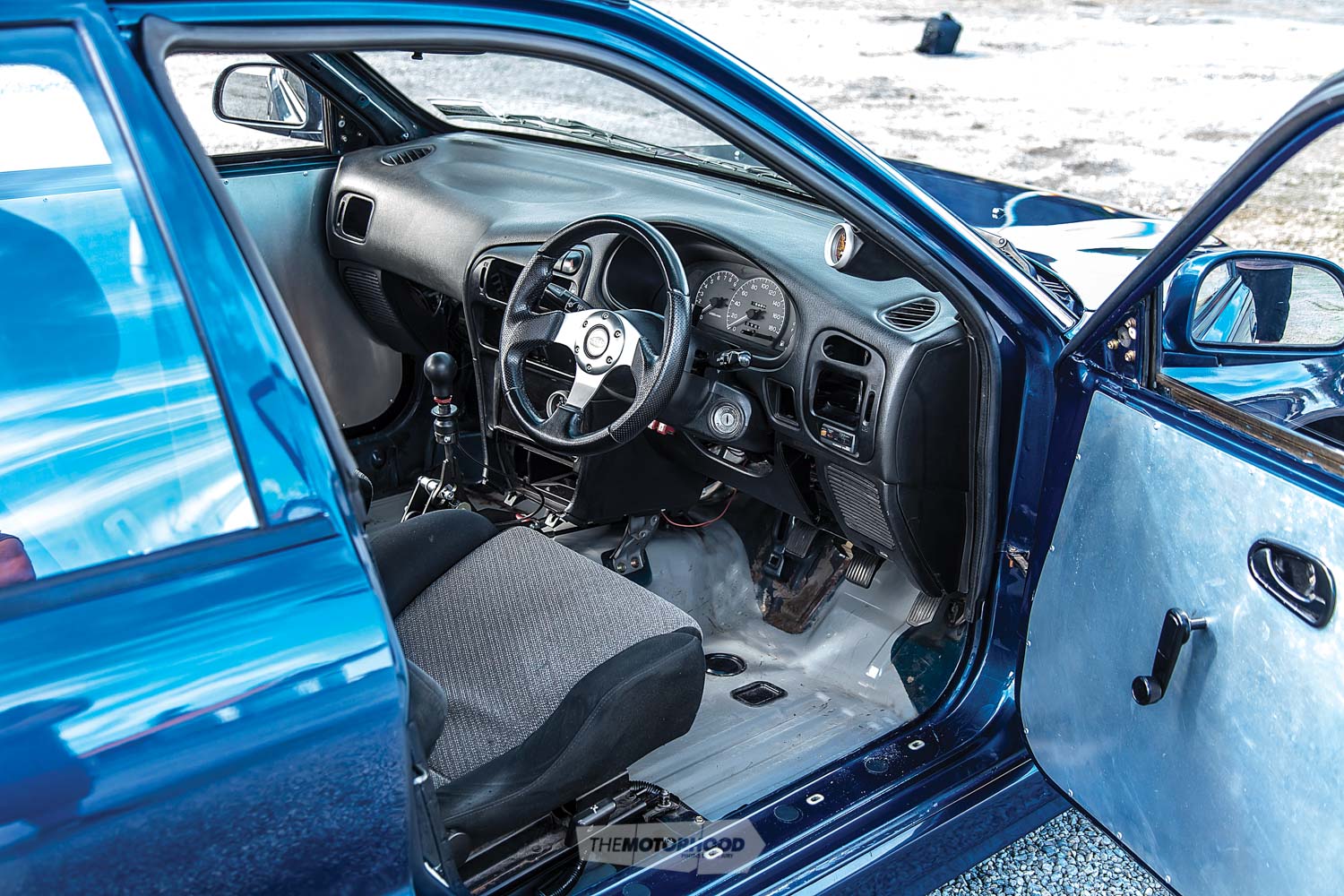
Once the new powerhouse found itself at home inside the GSR, the car was shipped down to Wellington for a second time to be run in and tuned. The trip resulted in 411kW on 26psi (98), and 520kW on 32psi (E85) with 756Nm of torque. As he did not want this engine to meet the same fate as the old one, Regan fitted a later-model sequential shifter that needed a fair amount of persuading to work correctly. The latest pass highlighted the need for a good set of tyres after running 11.3 seconds at 145mph (233kph) with a lot of wheelspin, which is why a set of yet-to-be-run DOT-rated drag radials is sitting in the garage. “The car is definitely not a nice, comfortable, air-conditioned daily-driver; it’s a stripped-out, engine-screaming, dog-box-clunking, twin-plate-rattling, badass, nine-second-capable race car that can be street driven, and that’s the way I like it,” Regan said, laughing.

Heart
ENGINE: Mitsubishi 4G63T, 2000cc, four-cylinder
BLOCK: CP pistons, Manley Turbo Tuff I-beam rods, Manley forged crankshaft, ACL Race Series bearings, ARP fasteners
HEAD: Ported and polished, Kelford 280/276 camshafts, Ferrea 1mm oversized valves, Crower valve springs, Crower retainers, HKS cam gears, HKS cam belt, Magnus Motorsport L19 head studs, Tomei head gasket
INTAKE: Turbo Motorsport Fabrications manifold, 80mm throttle body, four-inch intake pipe, K&N air filter
EXHAUST: Three-inch mild-steel system, AdrenalinR muffler
TURBO: Garrett GT3582R with .82 exhaust housing, custom top-mount manifold
WASTEGATE: TiAL 44mm
BOV: TiAL 50mm
FUEL: DeatschWerks DW200 lift pump, Aeroflow surge tank, twin Bosch 044 fuel pumps, SX fuel filter, Sard fuel-pressure regulator, HKS fuel rail, Injector Dynamics ID2000 fuel injectors
IGNITION: Eagle 10.5mm leads, NGK plugs
ECU: Link G4+
COOLING: Custom radiator, oil cooler, custom intercooler, 2.5-inch to three-inch intercooler piping
EXTRA: Link boost-control solenoid; Link 4 Bar MAP Sensor (MAP4); dual boost; launch control; dual map controller (98 and E85); oil catch-can; loom tidy; braided lines; anodized water, oil, and fuel fittings
Driveline
GEARBOX: Mitsubishi five-speed, PPG four-speed dog-engagement gearset, factory fifth gear, Ikeya sequential shifter
CLUTCH: Tilton twin-plate
FLYWHEEL: Custom flywheel
DIFF: (F) Cusco limited-slip, (R) GSR four-spider centre
Support
STRUTS: BC Red coilovers
BRAKES: Factory
EXTRA: Racefab front-facing cross member, SuperPro polyurethane rear diff bushes
Shoes
WHEELS: 15×7-inch (+46) OZ Racing Evolution III
TYRES: 205/50R15 Dunlop Direzza 036
Interior
SEATS: Factory Recaro
STEERING WHEEL: SAAS
INSTRUMENTATION: Auto Meter Sport Comp boost and oil-pressure gauges, Ikeya gearshift indicator
EXTRA: Stripped, aluminium door skins and rear firewall, Lexan rear windows
Exterior
PAINT: Resprayed factory blue
ENHANCEMENTS: Evo I bonnet and front guards, Evo II front bumper with fibreglass lip, Evo III side skirts and end caps
Performance
Power: 520kW at 32psi on E85, 411kW at 26psi on BP98
0–400m: 10.6@215kph (133.5mph) run on 370kW
1994 Mitsubishi Lancer Evolution II
“Out of me and Regan, I was the first to get a half-decent car. That was the Lancer GSR 1.8-litre turbo he mentioned,” Thomas said. “This is where it all started for us with modifying cars.” That vehicle clocked up six years of daily-driving duties with the occasional weekend adventure, and was fitted with the basic bolt-ons, including a front mount, screamer pipe, and BOV: “It’s funny, because, at the time, these seemed like big jobs,” Thomas explained. That chassis also received a turbo upgrade with a custom exhaust manifold, but the rust bug bit hard, and it came through on the roof — a problem that seemed to plague the early model Lancers.

Decked out from the bottom up, Thomas’ block is home to Wiseco pistons and Eagle rods, with the head packing Kelford 282/276 camshafts, and a Link G4+ to tie it all together
So, the engine and box were flicked off, and the pair agreed that it wasn’t worth the time or money to fix up the rust on the shell, so the rest of it was parted out. “A year or so had passed, and, while helping Regan in the shed with his new set-up, I realized [that] I was pretty keen to get another car,” Thomas told us. Turning to where most deals are found, the brothers spotted an Evo II on Trade Me that was in good nick and already homed a built engine. Within a week of owning it, the clutch gave out, but, luckily, a spare had survived from the GSR and dropped straight in. “I raced it a few times after that at Meremere and wrecked the gearbox,” he said. “After seeing how well Regan’s car had performed on the dyno, I pulled it off the road … it would have been stupid not to do a similar set-up.”
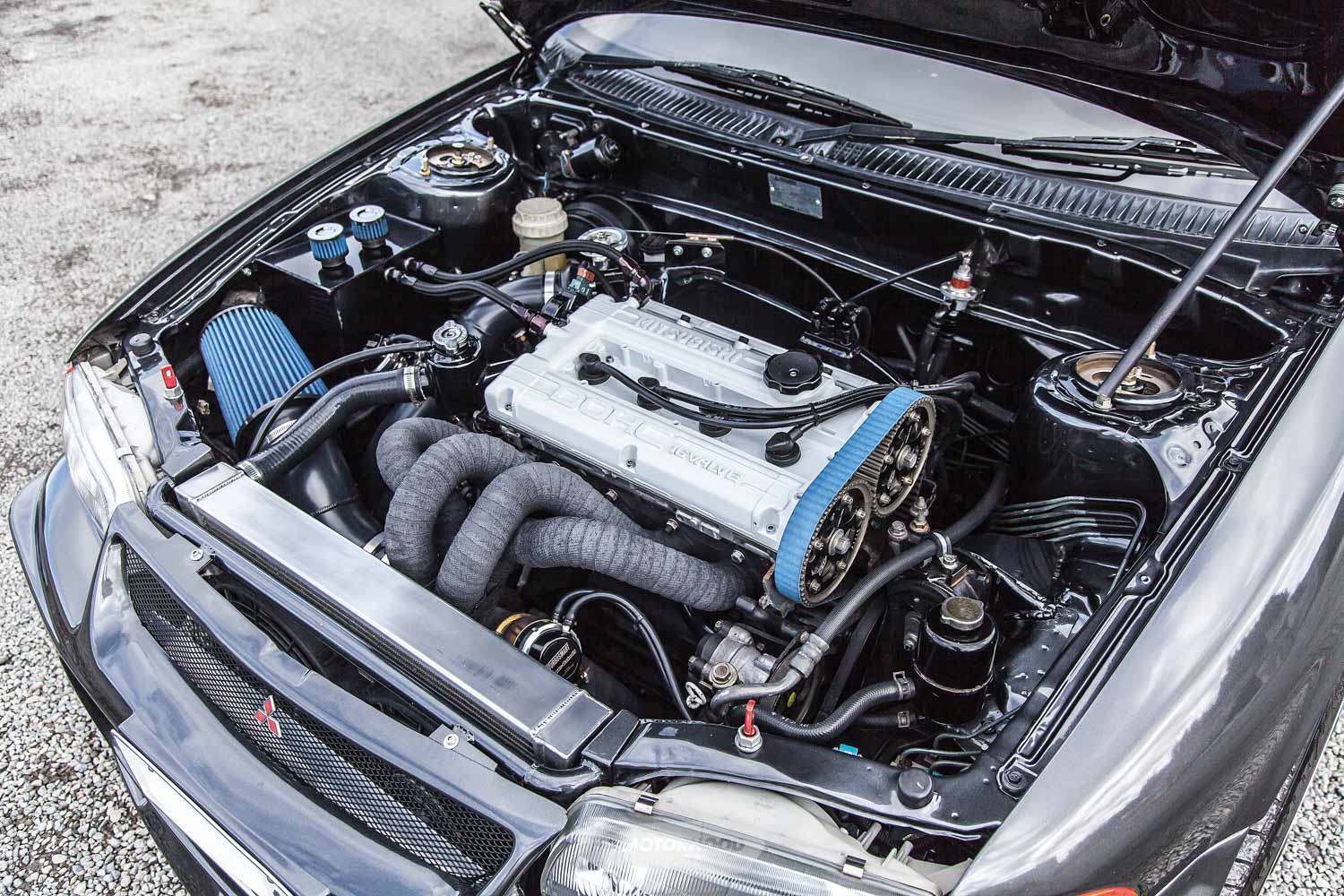
This tickle-up saw the same-spec Garrett GT3582R snail bolted on top of one of their custom-made top-mount manifolds, and, while on the custom fabrication train, the pair whipped up a full new exhaust system and intercooler piping, and modified the radiator support to carry a larger alloy radiator. “I ended up throwing on a new plenum, as well as an 80mm throttle body, a Turbosmart 45mm wastegate, a Turbosmart 50mm Race Port BOV, and the AEM cam gears,” Regan said. “To top it all off, I used braided lines and anodized fittings throughout, and, while the wiring got a good tidy-up, the shell received a fresh coat of paint to finish it off.” The car was then sent off to STM along with Regan’s to get tuned.

The Evo II sits functionally low over the 17×8-inch DTM Drift wheels thanks to a set of BC Gold coilovers
However, the ECU that the Evo had come with was quite limited, which restricted mid-range power due to its poor boost-control abilities. The end result was 372kW on 23psi, which delivered an 11.3-second quarter-mile. Not satisfied with the strip times or restriction on power, Thomas began putting away his pennies in order to buy a new Link G4+. When that time came, again STM was called on to work their magic, as well as to dial in the new Kelford 282/276-degree camshafts that had also been added since the car’s last visit. “It was a completely different car to drive with the mid-range power there,” Thomas told us.

Since then, he has managed to run a couple of 10.7-second runs, including a 10.8-second pass with a failing gearbox. Thomas plans to finally get a roll cage installed so he can stop getting told off by the dragway officials and to upgrade the fuel system to E85, like his brother already has.

Neither twin is a fan of big aftermarket kits, and they opted to use OEM Evo I, II, and III parts to complete the cars’ looks
Heart
ENGINE: Mitsubishi 4G63T 2000cc four-cylinder
BLOCK: Wiseco pistons, Eagle rods, ACL Race Series bearings, ARP fasteners
HEAD: Ported and polished, Kelford 282/276 camshafts, AEM cam gears, Beehive valve springs, titanium retainers
INTAKE: Four-inch intake pipe, upgraded inlet manifold, 80mm throttle body
EXHAUST: Three-inch stainless system with dump pipe, XForce muffler, custom manifold
TURBO: Garrett GT3582R with .82 exhaust housing
WASTEGATE: Turbosmart 45mm
BOV: Turbosmart 50mm Race Port
FUEL: Factory fuel pump acting as lift, custom surge tank, Bosch 044 main fuel pump, Injector Dynamics ID2000 fuel injectors, Sard fuel-pressure regulator
IGNITION: Eagle 10.5mm leads, NGK plugs
ECU: Link G4+
COOLING: Custom alloy radiator, twin 10-inch electric fans, Mocal oil cooler with braided lines, custom intercooler, 2.5-inch to three-inch intercooler piping
EXTRA: Link boost control, dual boost switch and launch control, oil catch-can, custom breathers with braided lines, modified radiator support bar
Driveline
GEARBOX: Mitsubishi five-speed
CLUTCH: Unsprung five-puk
FLYWHEEL: Lightened
DIFF: (F) GSR, (R) plate-type limited-slip
Support
STRUTS: BC Gold coilovers
BRAKES: Factory, slotted rotors
EXTRA: Rear strut brace, adjustable toe and camber arms
Shoes
WHEELS: 17×8-inch (+28) DTM Drift
TYRES: 205/40R17 Falken FK452
Interior
SEATS: Factory Recaro
STEERING WHEEL: SAAS deep-dish
INSTRUMENTATION: Factory
Exterior
PAINT: Gunmetal grey
ENHANCEMENTS: Evo III kit
Performance
Power: 407kW at 26psi (BP98)
0–400m: 10.7@217kph (135mph)
The twins definitely aren’t afraid to give anything a go, with a series of intricate fabrication work under their belts as they dealt with repeatedly blown engines and smashed gearboxes. “As you could imagine, owning high-power Evos, we have just about broken everything you could think of,” Regan said. “Over time, we have learned a lot about cars by just giving it a go, starting off with basic mods like blow-off valves, front mounts, and screamer pipes. These days we do 90 per cent of the work ourselves at home in the shed,” he continued, proudly. Thomas added, laughing, “It definitely makes things a lot easier when you’ve got two pairs of hands.”

Driver/owner: Regan Briggs
Age: 28
Location: New Plymouth
Occupation: Heavy fabricator
Build time: Ongoing
Length of ownership: 8.5 years
Driver/owner: Thomas Briggs
Age: 28
Location: New Plymouth
Occupation: Builder
Build time: Three years
Length of ownership: 3.5 years
Thanks: We would like to thank each other; our mate Anton for always being keen to lend a hand [at] any time of the day or night; our other mates Leith, Hamish, Talor, and [the] boys from work who have helped out along the way; and Chris Wall and the boys at STM, including Andre Simon and Doug Goodall, who have been a great bunch of dudes to deal with over the years. Cheers!
With both cars constantly evolving, the pair have already begun planning big changes to the suspension set-up in hopes of improving their personal bests and breaking into that nine-second bracket. For now, the brothers are quite happy to chip away at making the pair of cars faster, while still enjoying them on the street. As Regan said, “We take a lot of pride in our cars — especially the engine bays; they are tidy enough, but the main priority is performance, and they were built to be used.”





